Colorants add a beautiful look to handmade soap. Before getting started, it helps to know which ones work best for your recipe. Learn more about Bramble Berry colors below. What type of colorants does Bramble Berry carry? We carry pigments, micas, ...

Yesterday on Soap Queen... |
|
|
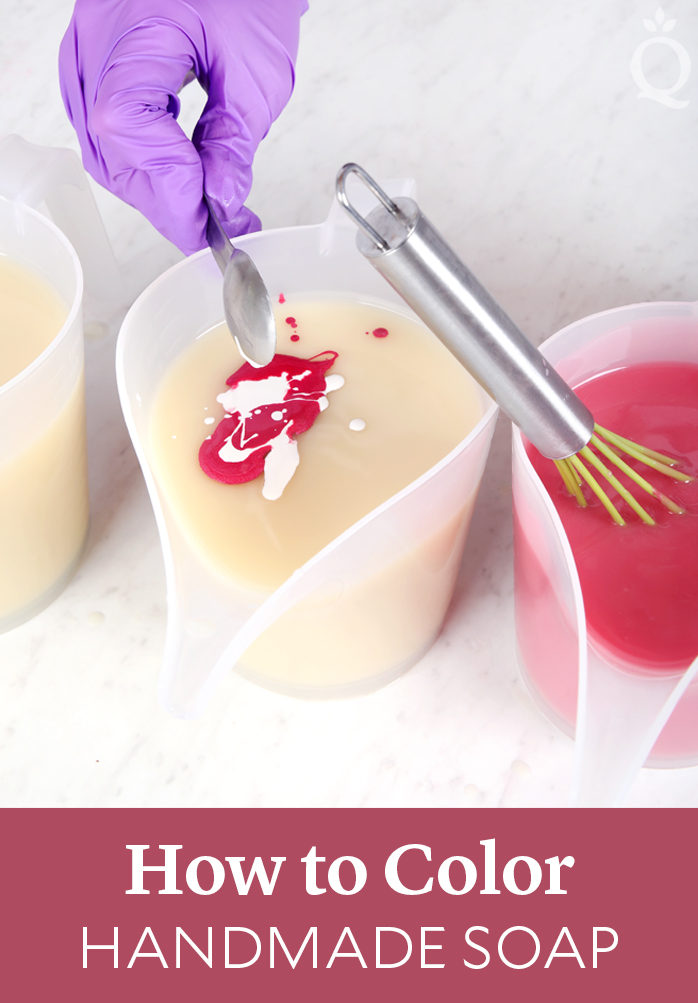
Colorants add a beautiful look to handmade soap. Before getting started, it helps to know which ones work best for your recipe. Learn more about Bramble Berry colors below. What type of colorants does Bramble Berry carry?
We carry pigments, micas, LabColors, and color blocks. They're skin safe and can be used in soap and cosmetics. Does Bramble Berry carry natural colorants?
Pigments are considered nature identical. That means they're the exact same chemical structure as the platelet minerals found in the earth, but they're created in a lab to remove impurities like lead and arsenic. Industrywide, they’re considered natural because they don't contain synthetic dyes. Learn more about natural products here. Some micas are considered natural and some aren't – it depends on if they’re made with FD&C dyes. Coral Mica contains FD&C Red 40 Lake so it's not considered natural, while Aqua Pearl Mica is because it's made with mica, titanium dioxide, iron oxide, and chromium oxide green. Learn more in the Sunday Night Spotlight: Mica Colorants post. 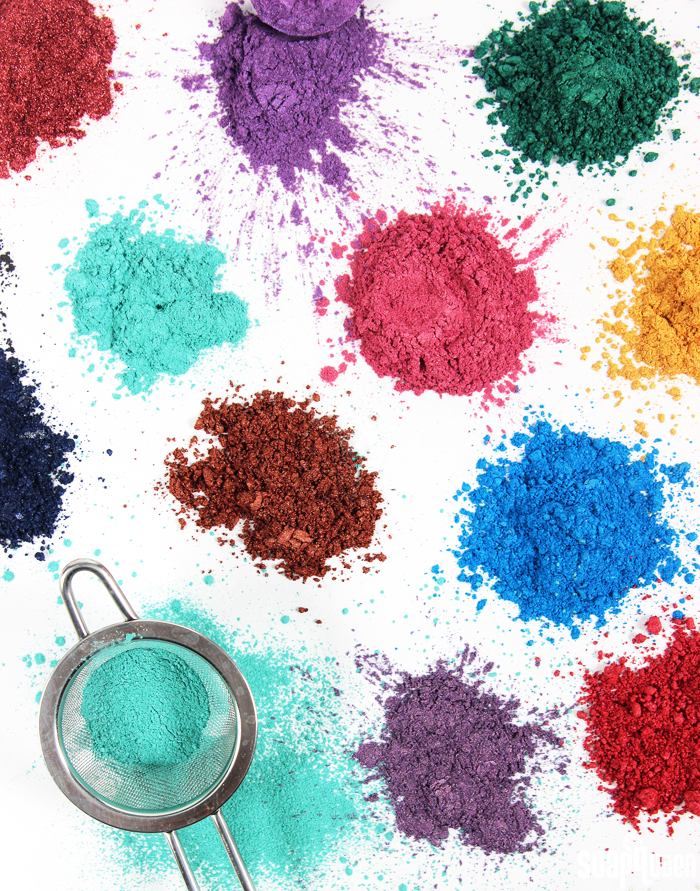
If you want colorants that are derived straight from the earth and not synthetically created, check out the herbs and botanicals section. It includes natural options like spirulina, rose clay, tomato powder, and activated charcoal. What is a bleeding colorant?
Bleeding colorants are usually dyes or FD&C colors that migrate into other layers of your soap over time. You can work the bleeding into your design, as seen in the Layered Lavender Cold Process Soap. If you're not a fan of that look, make sure to use non-bleeding colorants. Pigments Cold process - Mix 1 teaspoon of pigment with 1 tablespoon of a lightweight oil like sweet almond or avocado. If you're making a larger batch, you can increase that to 2 teaspoons into 2 tablespoons, or 3 into 3. Add 1 dispersed teaspoon at a time at trace until you get a color you like. We recommend about 1 dispersed teaspoon per pound of soap.
Melt and pour: - Mix 1 teaspoon of pigment with 1 tablespoon of glycerin or 99% isopropyl alcohol. Add ¼ teaspoon of dispersed color to the melted soap until you get a color you like.
- Add shavings of color blocks to the melted soap until you get a color you like. Color blocks are essentially super concentrated melt and pour, so they incorporate more easily into soap than loose pigments.
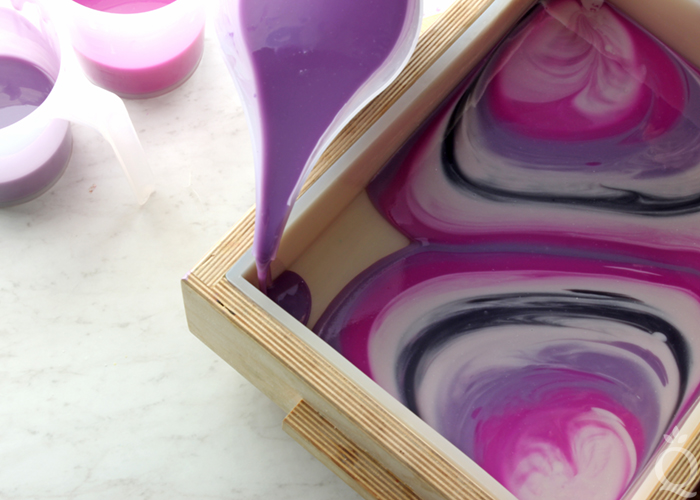
Micas
Cold process - Make sure to check the testing notes on each product page before use. Certain micas morph or fade in cold process soap.
- Mix 1 teaspoon of mica with 1 tablespoon of a lightweight oil like sweet almond or avocado. If you're making a larger batch, you can increase that to 2 teaspoons into 2 tablespoons, or 3 into 3. Add 1 dispersed teaspoon at a time at trace until you get a color you like. We recommend about 1 dispersed teaspoon per pound of soap.
Melt and pour - Add the mica straight to the melted soap and stir well. If you see bubbles forming, spritz with alcohol and continue mixing. You can use up to ½ teaspoon per pound of soap.
- Mix 1 teaspoon of mica with 1 tablespoon of 99% isopropyl alcohol. Add ¼ teaspoon of dispersed color to the melted soap until you get a color you like. This method helps the color mix in more quickly.
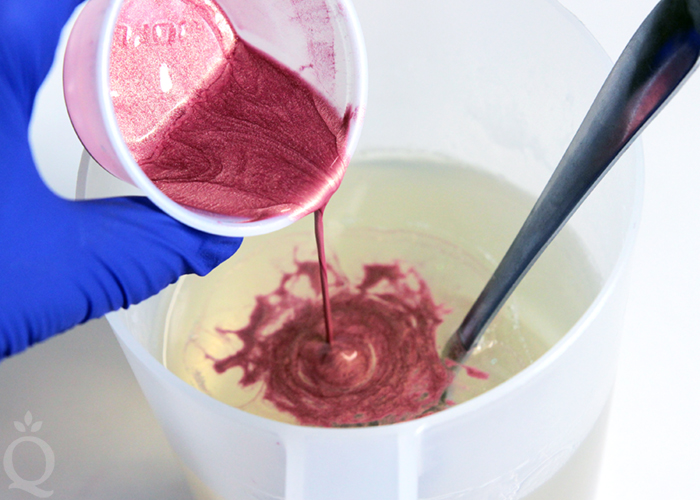
LabColors Cold process and melt and pour - They need to be diluted with distilled water and a preservative before use. Learn how to do that in this post.
- Using a dropper, add the diluted colors to fluid melt and pour or thin trace cold process soap. The usage rate depends on the color and how much it's diluted. A good place to start is about 1/2 mL per pound of soap.
- LabColors work best with gel phase. Learn more about insulating soap here.
Natural colorants Cold process - Mix 1 teaspoon of the powder with 1 tablespoon of a lightweight oil. If you're using clay, we recommend mixing with distilled water. Add 1 dispersed teaspoon at a time at trace. Check the product pages for usage rate suggestions.
- You can also infuse natural colorants. To do so, heat the colorant and the oil of your choice in a slow cooker for 1-4 hours or place in an airtight container and leave at room temperature for 4-6 weeks. Learn more about infusing in this post.
Melt and pour - Mix 1 teaspoon of powder with 1 tablespoon of 99% isopropyl alcohol or distilled water. Add ¼ teaspoon of dispersed color to the melted soap until you get a color you like.
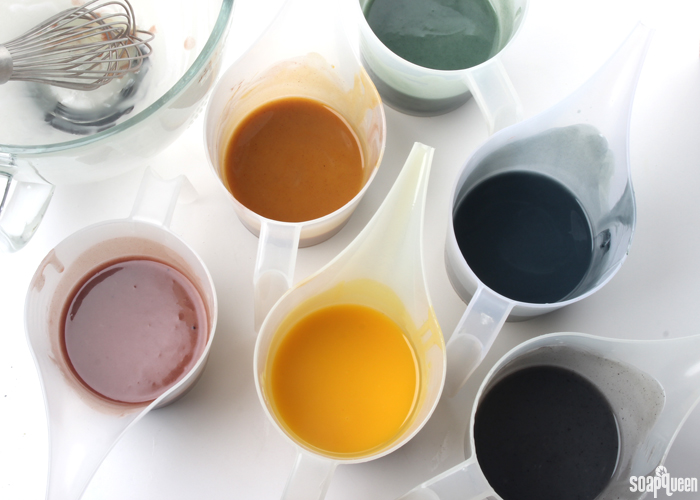
This post was updated in June 2018. The post How to Color Handmade Soap appeared first on Soap Queen. |
|
Email subscriptions powered by FeedBlitz, LLC •






Keine Kommentare:
Kommentar veröffentlichen